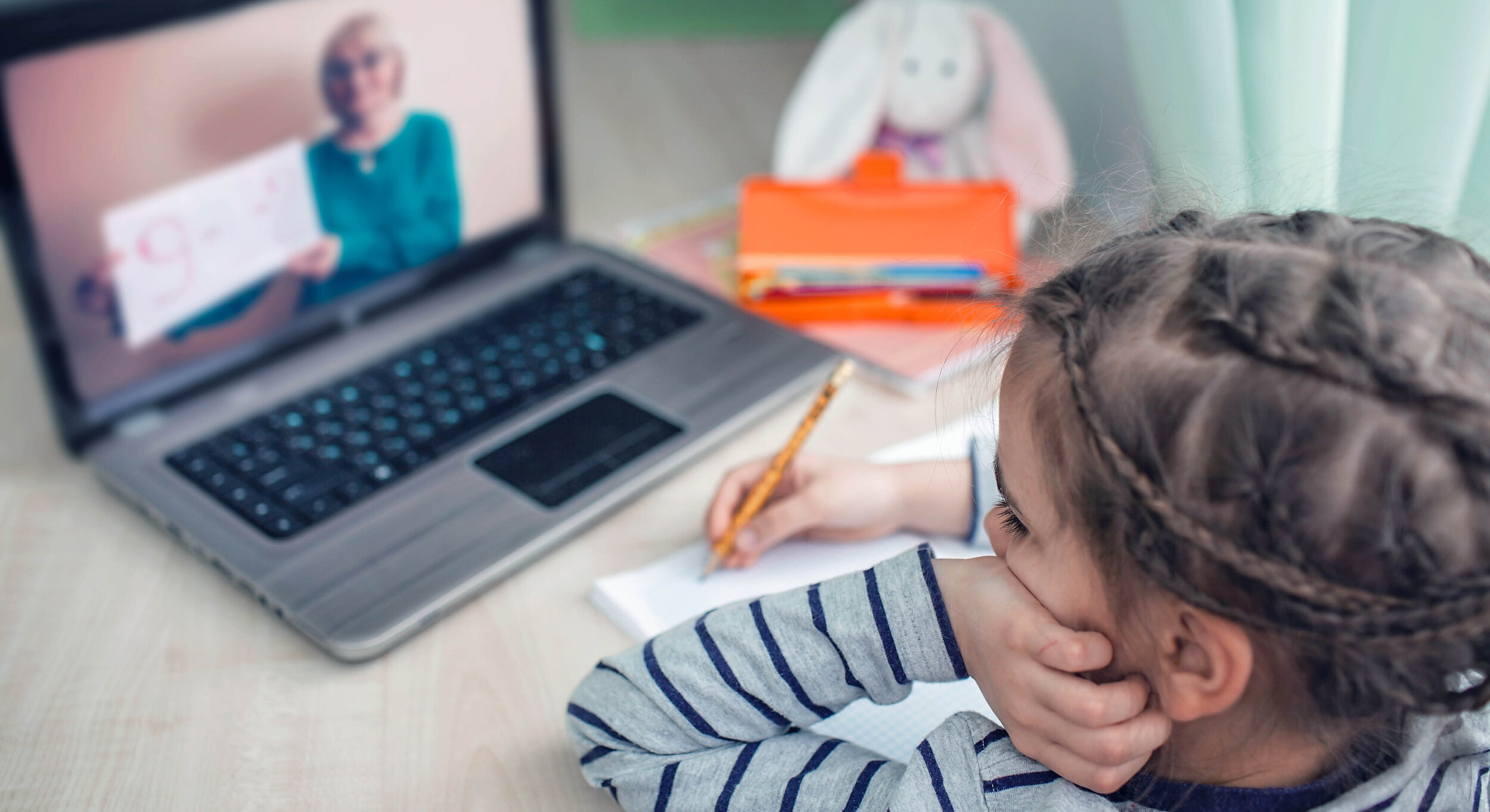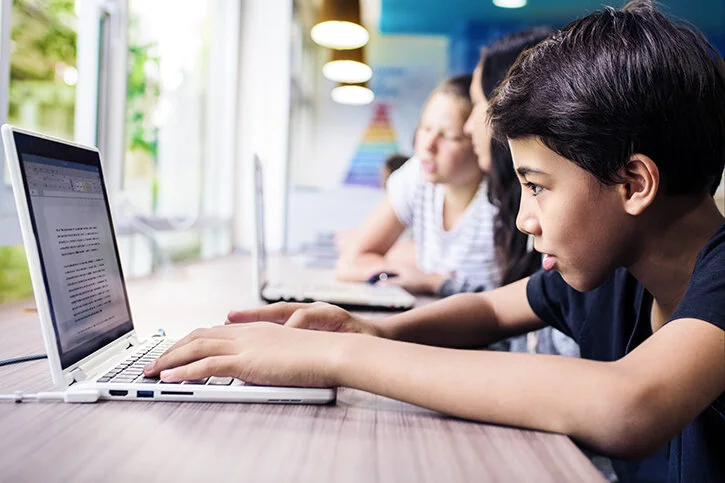As the federal government continues to recommend that Canadians stay at home during the COVID-19 crisis, students across the country are trying to adjust to their new distance learning situation. For many teens, the past few weeks have been overwhelming. How can teachers and parents/caregivers help them navigate this stressful time? To start, we can be supportive and positive. We can show empathy and perspective. To help teens stay engaged and motivated to learn at home, we can use the educational technology available to us in a thoughtful and innovative manner.
Most teens are experiencing high levels of stress trying to manage distance learning during the COVID-19 crisis.
How Much Online Learning Is Required?
It depends on each province’s mandate. Ontario’s Ministry of Education, for example, has set guidelines for the number of hours students should spend learning at home:
Kindergarten–Grade 6 → 5 hours per week, or 1 hour each day
Grades 7 and 8 → 10 hours per week
Grades 9–12 → 3 hours per week for each semestered course and 1 hour per week for each year-long course
These hours may not seem like a lot compared to regular in-school hours. However, teens may get easily overwhelmed as they’re trying to learn new technology during self-isolation and keep their anxiety in check. They aren’t able to ask teachers or classmates a quick question in real-time. Their parents may be busy trying to meet their own deadlines while working from home. Teens may be dealing with non-school issues, too, such as having a part-time, public-facing job or worrying about a parent who’s a healthcare worker. A teen’s mental health is vulnerable right now. As Erica Potter, a drama teacher at Longfields-Davidson Heights Secondary School, says in an Ottawa Citizen online article:
“ …we know that our students are probably having a real tough time as well, and we don’t want to create any additional stress that they might be feeling. Hopefully, having school, and teachers, it will bring back a bit of a sense of routine, but we’ll tread very lightly because everybody is in a different situation.”
Erica Potter
Drama Teacher at Longfields-Davidson Heights Secondary School
Getting Creative with Online Learning
Since teachers aren’t in classrooms with their students, they’ll need to think outside the box when delivering lessons. Below are a few ways to get creative and innovative with online learning (and still meet curriculum expectations) while the physical distancing order is in place.
1. School Talent Shows
In-person talent shows have been cancelled. What happens to students who would have participated and been graded on their performance? Try hosting the show online. Encourage students to post a video of their performance on Instagram. Or host a live talent show on Google Hangouts and invite students and parents/caregivers to offer support.
2. Field Trips
Along with so many other public events, school field trips have been cancelled. With Live Learning Canada, teachers and students can take fascinating virtual field trips to museums, zoos, concerts, historical sites, laboratories, and more. Subject matter experts deliver the interactive lessons that feature destinations from around the world.
With Live Learning Canada, students and teachers can take a virtual field trip to destinations around the world, such as this live concert. (Source: https://livelearningcanada.com/live_streaming.html at 15 sec mark.)
Communicating with Students and Parents/Caregivers
It’s important for teachers to keep in regular contact with students and parents/caregivers during this unprecedented time. Try to check in often—ask how they’re doing and how their online learning is going. Encourage feedback on your lessons and show you’re there to support them. These days, teachers are getting quite innovative in the ways they choose to communicate. One user-friendly option is the Edwin Ecosystem, a resource that school boards across the country have free access to until June 30. It can be used to easily integrate various communication and education apps, such as Google Classroom, Google Meet, Edsby, Pear Deck, and We Video. Simon Flint, an educator and member of the Edwin Classroom Success Team, describes in the video below how he uses Edwin Collections to communicate with students and build online resources.
Sample screen of Simon Flint’s Edwin Collections. (Source: https://www.youtube.com/watch?time_continue=1&v=P1o3isSC6R0&feature=emb_title at 3:34 minutes.)
More Apps to Help with Remote Learning and Staying Connected
Below is a short list of other digital resources that could prove helpful as you navigate this uncharted territory of 100% learning at home—and teaching at home.
Kahoot! is a popular platform where teachers create multiple choice quizzes that students answer on their tablets or computers.
Knowledgehook is an interactive math platform that provides diagnostic assessments and sends feedback about a student’s progress to teachers and caregivers.
ClassFlow enables teachers to create engaging, multimedia lessons that they can share with students via various digital devices (e.g., tablets or smartphones).
Classcraft is a story driven role-play gaming software that teachers and students can use together.
Canvas enables students to submit assignments, view their grades, and explore course content. Students and teachers send and receive messages and contribute to discussion boards.
Additional Help for Students
Many teens are experiencing high levels of stress and anxiety as they try to tackle online learning and deal with the COVID-19 crisis. Besides providing support and empathy, what else can teachers do? Try holding a Daily Pep Talk (live stream or recorded). You could also work with your staff to create a collective video to demonstrate that you are still a community, and that everyone is working together to help each other get through this crisis. Teachers at Stratford Elementary School in Prince Edward Island put together a video to say how much they miss their students, and also show them what life is like in their own homes:
Suggest to parents and caregivers that they watch your Daily Pep Talk with their child. It could be a good way to show their support during this difficult and stressful time.
. . . . .
Managing distance learning during the COVID-19 crisis can be overwhelming for everyone at times. But if we work together to keep teens engaged and motivated—while also considering their mental health and well-being—we will get through this. Please share your experiences in the comments section. Thank you, and stay safe!
REFERENCES
Miller, Jacquie.
“Two million elementary, secondary Ontario students head back to school — online.” Ottawa Citizen, April 6, 2020. https://ottawacitizen.com/news/local-news/two-million-elementary-secondary-ontario-students-head-back-to-school-online/






















